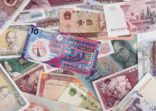Rebecca Chua, Premia Partners
“We expect to launch two strategies by the summer and another two in the second half of the year,” Rebecca Chua, managing partner of Premia Partners told FSA.
They will be regional smart beta ETFs, rather than China-specific, and at least one will be a fixed interest product.
“Sophisticated Asian institutional investors have been familiar with the advantages of multi-factor ETFs that aren’t simply based on market-cap for some time,” she said.
“More recently, the wealth management segment has become more receptive following efforts to educate them about their diversification and cost benefits, as well as the arguments for concentrating on value and quality stocks,” she said.
“Smart beta” is a nebulous term, but London-based research and consultancy firm ETFGI identified several broad factors after surveying index providers. These include fundamentals, such as book value and earnings, volatility, price momentum, or multi-factors which comprise a combination of these elements, according to Deborah Fuhr, ETFGI’s managing partner.
In 2018, smart beta ETFs/exchange traded products (ETPs) attracted $77.62bn in net new assets worldwide, according to the research firm. During the course of last year 141 smart beta ETFs/ETPs were launched by 72 providers.
In Asia, smart beta funds also continued to grow in popularity. By the end of last year, there were 220 smart beta funds and products with assets amounting to $10.13bn, which is 73% more than at the end of 2016, according to ETFGI data.
In Asia-Pacific (ex-Japan), Van Eck is the largest smart beta provider in terms of assets with $843m, reflecting a 12.5% market share. Mirae Asset’s smart beta assets are second with $712m and 10.5% market share, followed by Yuanta with $691m and 10.2% market share, according to ETFGI.
The top three providers, out of 54, account for 33.2% of assets, while the remaining 51 providers each have less than 7% market share, the firm said.
Smart beta and China
In 2017 Premia launched two smart beta products: the CSI Caixin China Bedrock Economy and CSI Caixin New Economy ETFs. The former aims to capture high quality contributors to China’s real economy through diversified sector exposure and balanced concentration risk and is offered as an alternative to the CSI 300 and MSCI China A indices.
The latter – an alternative to the ChiNext and CSI 500 – looks for exposure to companies that likely benefit from technology developments, urbanisation, the rising middle class, consumer upgrades, education, an ageing population and healthcare.
“[Winning companies] are evolving in Asia’s emerging economies and especially in China as structural changes take place,” Chua said. “These winners are most likely to be identified early by the quality of their balance sheets – profitability, free cash flow and low leverage – and their attractive valuations.”
However, it might be too soon for investors as a whole to fine tune sectors of the Chinese market. The performance of China smart beta funds suffered last year.
“Investors should not expect day-to-day outperformance, and there will also be occasions of underperformance when the Chinese authorities intervene to support the largest cap stocks,” said Chua.
Last year, Premia also launched two non-China multi-factor products: the Asia Innovative Technology and the Dow Jones Emerging Asean Titans 100 ETFs.
The screening processes for the funds are similar to actively-managed products. The main differences, Chua believes, are that the ETFs are “cheaper (0.50% ongoing expenses) and more transparent”.
Comparative performance of Premia CSI Caixin China Bedrock Economy ETF and CSI Caixin China New Economy ETF since inception

Source: FE Analytics (US dollars).
Passive popularity continues
Looking at all ETF/ETPs globally, December 2018 was the 35th consecutive month of net inflows, ETFGI reported.
ETF issuance in Asia Pacific (including Japan) continues to expand too – although the rate of growth was well below the rate experienced in 2017 when the products were widely promoted as a way of gaining exposure to increasingly fragmented market sectors.
Assets invested in ETFs/ETPs listed in the region increased by 10.6% in 2018 to reach a record high of$457.4bn.
Equity ETF/ETP asset growth in Asia-Pacific
| Year |
2014 |
% change |
2015 |
% change |
2016 |
% change |
2017 |
% change |
2018 |
| Number of ETF/ETPs |
588 |
+29.8 |
763 |
+20.6 |
920 |
+12.8 |
1038 |
+11.4 |
1153 |
| Number of Smart Beta |
78 |
+77.0 |
138 |
+28.3 |
177 |
+14.1 |
202 |
+8.9 |
220 |
| ETF/ETP Assets ($bn) |
193.9 |
+20.0 |
232.6 |
+17.3 |
272.8 |
+51.6 |
413.6 |
+10.6 |
457.4 |
| Smart Beta Assets ($bn) |
3.46 |
+31.5 |
4.55 |
+28.8 |
5.86 |
+67.2 |
9.80 |
+3.4 |
10.13 |
Source: ETFGI. To end of 2018. Assets in US dollars.

















